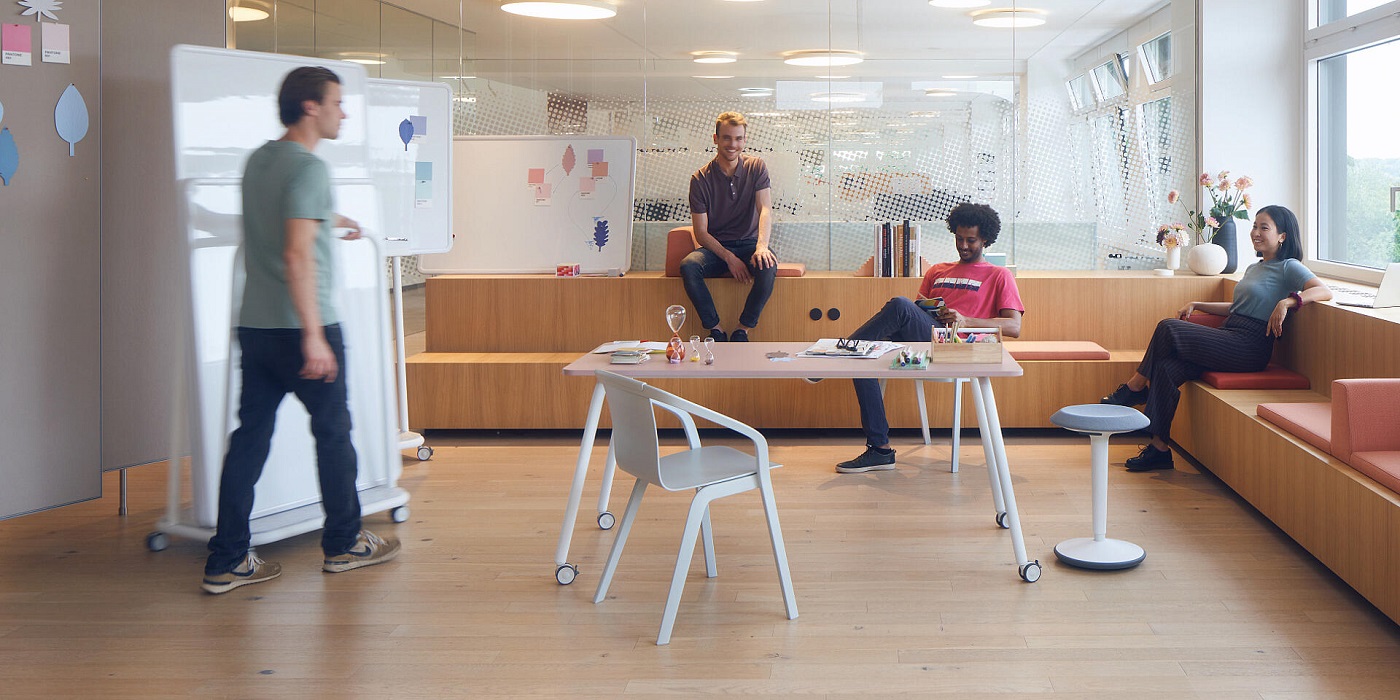
Relaxation area: why to have it and how to furnish it
The relaxation area is a new strategic area to consider when designing a new workspace, but also when reconfiguring an existing environment.
Why is it so important?
The relaxation area can serve many functions.
Taking a break.
The relaxation area is the space dedicated to those who want to take a few minutes to clear their minds. This can limit stress and increase users’ productivity.

Fostering the emergence of the team.
It can be for all intents and purposes a meeting place for colleagues to talk about more and less and get to know each other better. These are the prerequisites for the creation of a collaborative and close-knit team.

Birth of new ideas.
Interactions among colleagues in a more informal setting than the office can foster a different kind of discussion, where thoughts come together giving light to innovative ideas, whether for problem solving or for developing new activities.
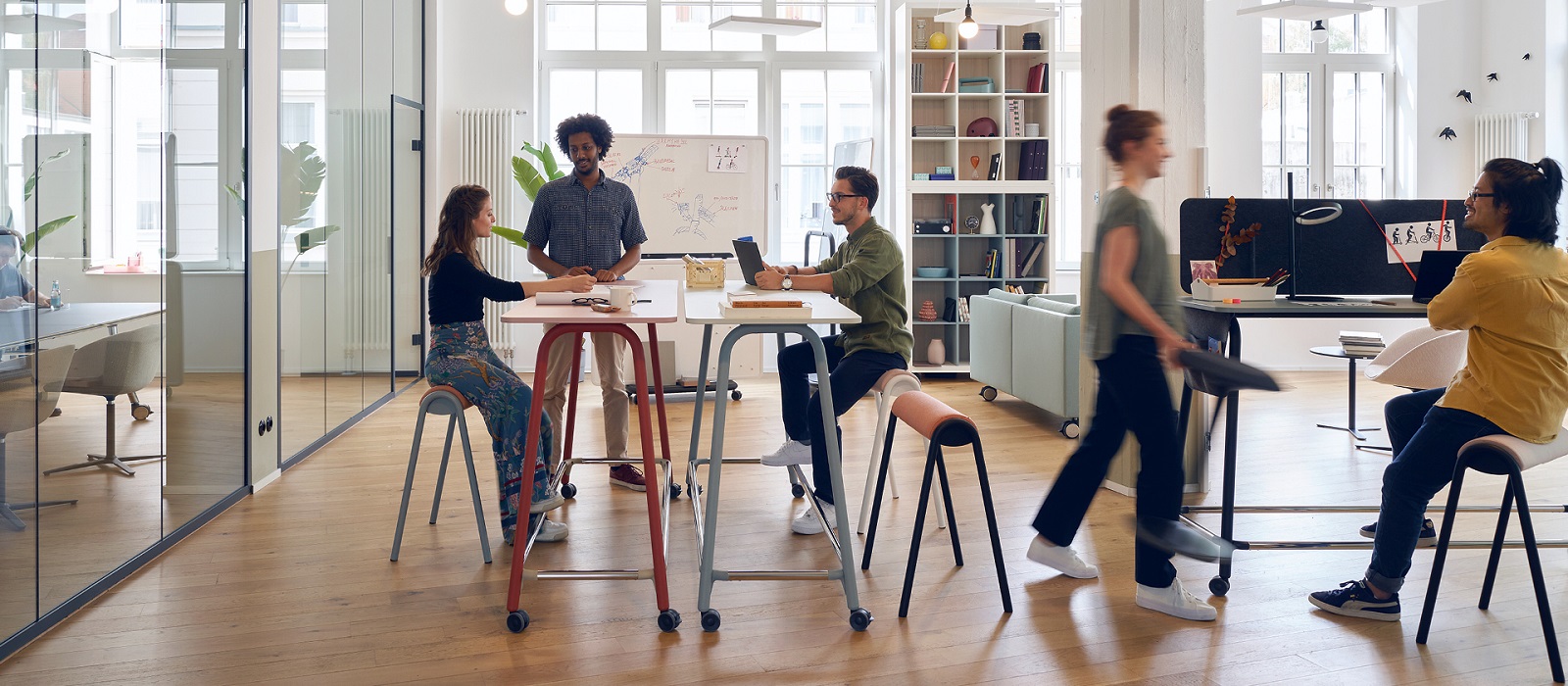
Area for thinking.
The open space office, if not well organized, can give rise to stressful situations, decreased concentration and decreased productivity. The relaxation area, in this case, can be designed as a private environment in which the user can “take refuge” to think. In fact, thanks to innovative sound-absorbing furniture systems, small spaces in which to isolate oneself can be created in just a few square meters.

Food court.
A complete relaxation area also provides adequate space for regeneration. Kitchenette, tables, counters, stools, numerous types of accessories that allow you to create a small or large dining area, usable by all users.

Furniture systems for all kinds of relaxation areas
The relaxation area, as we have seen, can perform numerous tasks. It must therefore be designed to the best of its ability to meet the needs identified in the preliminary study phase.
It does not necessarily have to be a “defined” room; on the contrary, it can be carved out of a small, well-organized space.
Below are some solutions and inspirations for a relaxation area that can fulfill all the functions listed above.
Informal sessions.
Sofas, ottomans, stools, in short a seat other than the task chair, in order to temporarily mitigate the idea of the office. This choice of furniture thus serves to transport the mind to an informal environment, outside of work and in some ways more domestic.
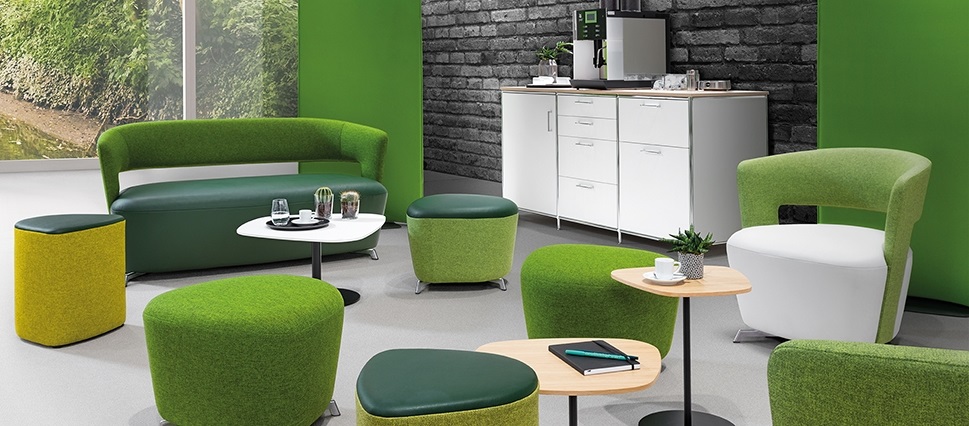
Individual and shared furniture solutions.
It is very important to include both single seats, for those who want to rest or concentrate better, and multi-seat seating systems, to encourage interactions. Sound-absorbing sofas in this case are the most suitable because through their high backs it is possible to “acoustically circumscribe” the area in which one is seated, thus fulfilling both functions in the best possible way: to isolate oneself or to confront each other without disturbing others present. Below we propose People.


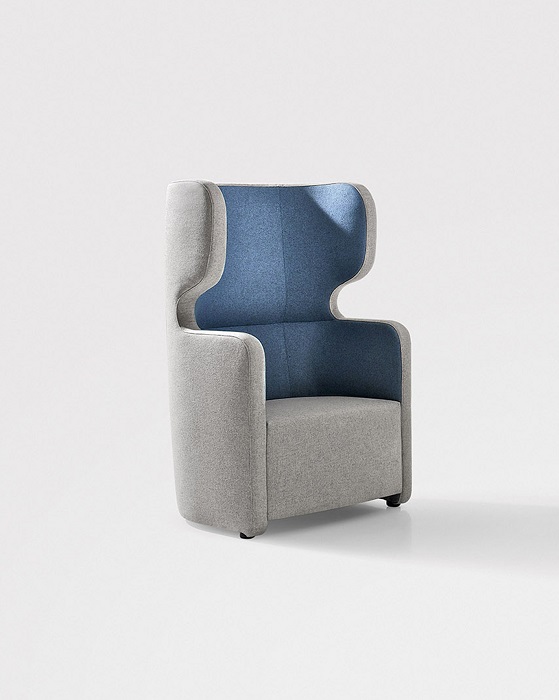
Kitchenette and table.
The inclusion of a one-piece kitchen or a few essentials (electric oven/microwave and refrigerator) depending on the space available is sufficient to create a dining area that can be used by all users, both during lunch breaks and breaks during the workday. The inclusion of a high table and stools are necessary for the consumption of meals and at the same time encourage space sharing and thus communication.
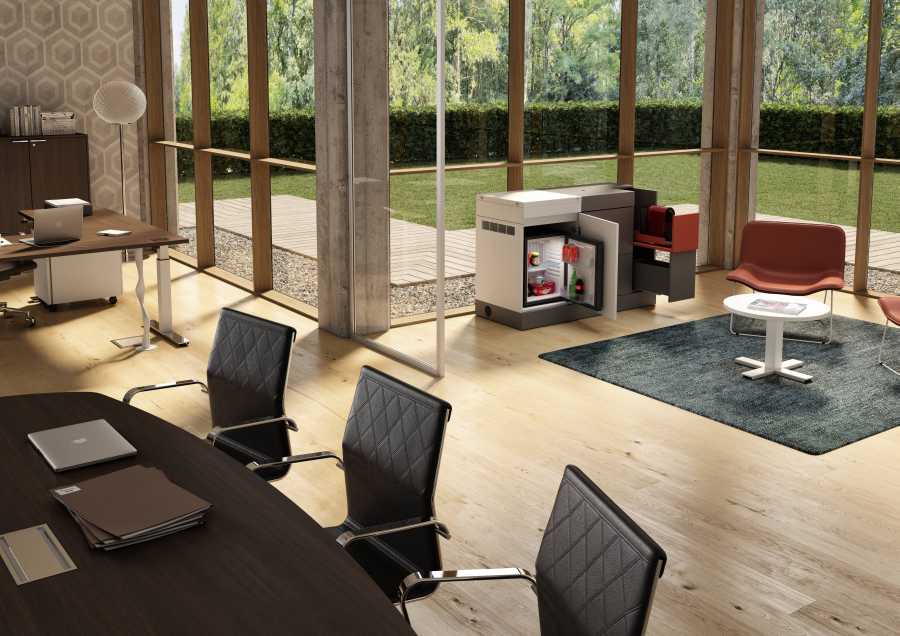

Each office area should be designed for the well-being of those who will use it, so should the relaxation area.